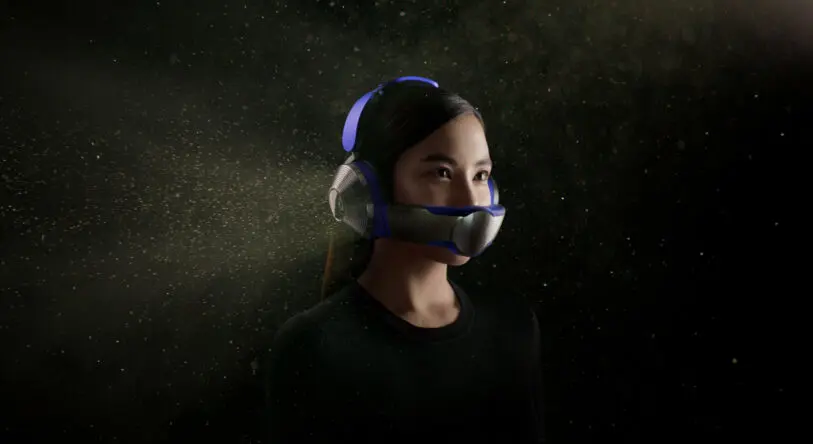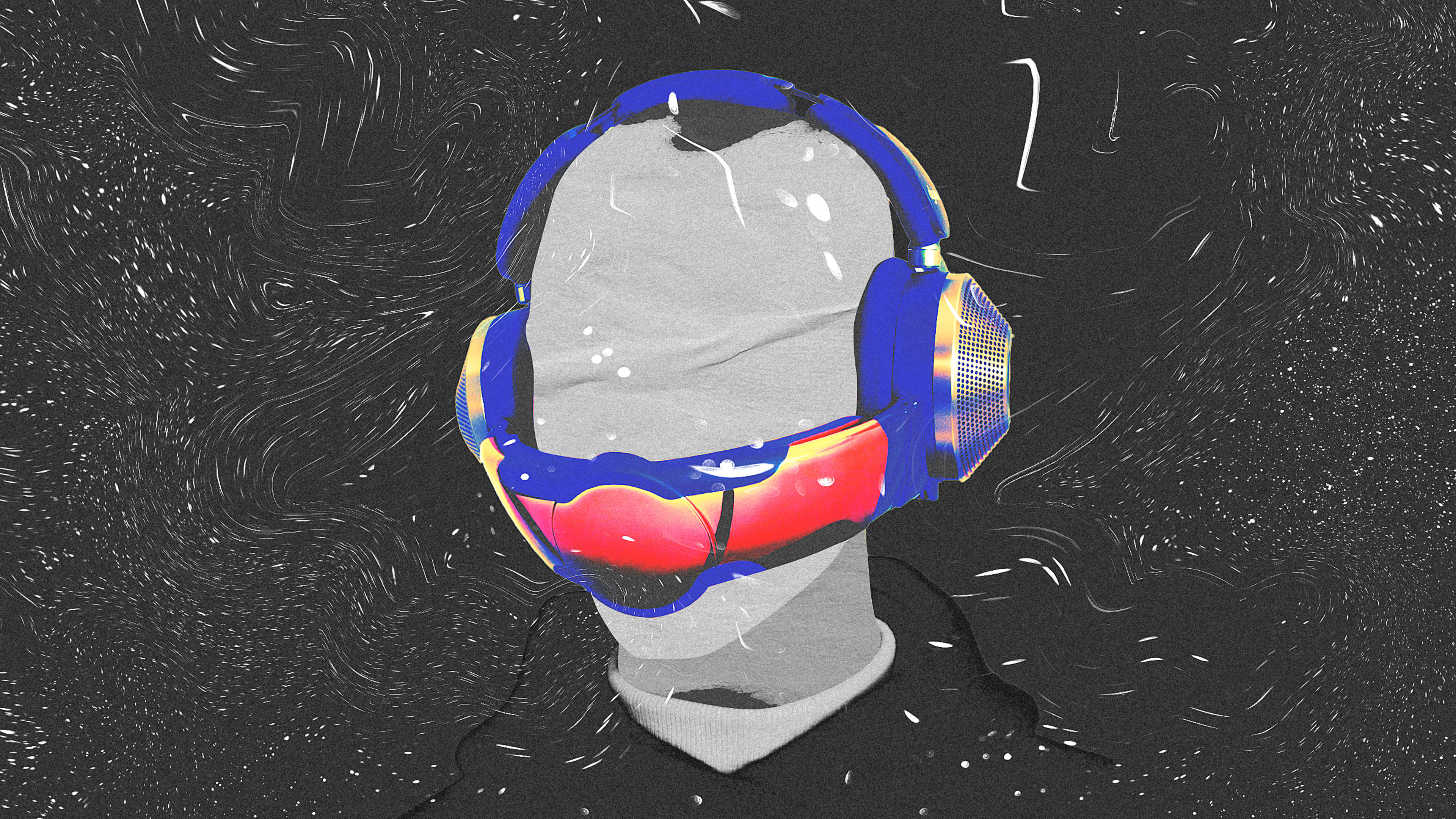After last year’s European release, the Dyson Zone Headphones are now available in the U.S. As the $950 headphone-meets-air purifier makes its way into the world, I have a renewed sense of confusion around the contraption, which in our current cultural moment feels as needed as a puffer coat for penguins.
Once upon a time in the COVID apocalypse, we all thought that the Dyson Zone could be the ticket to our survival—some kind of special superpower mask that would allow us to survive as humanity stepped into the infinite night. We would look like Bane, sure, but this personal air cocoon would also block viruses, pollution, pollen, and every particle down to .1 microns from reaching our lungs, leaving us to live inside a pristine, private air bubble, set to the playlist of our choosing.
Dyson’s thinking around the Zone was weirdly prescient, having started developing the gadget more than seven years ago as a way to combat air pollution. The engineering company couldn’t have predicted COVID, but it did correctly tap into humanity’s magnetic pull towards doomsday aesthetics.
David Hill, Dyson’s Senior Design Manager, says he believes the product has its place in the post-pandemic world: “Most of us live in areas where air quality can exceed recommended standards from the World Health Organization. Likewise, noise pollution is everywhere. It is an underappreciated issue for our mental and physical well-being—and the effects can build up over time.”
Truthfully, had the Dyson Zone come out two years ago, I would have probably bought one for my son and myself, even if that would have set me back almost $2,000. But two years is a long time, and today, the Dyson Zone looks like an individualistic Band-Aid for the grave social problem of urban pollution.

Through the lens of pollution, the Dyson Zone is a curiously self-defeating object. It’s hard to ignore how the energy and resources used to manufacture this gadget will ultimately further contribute to the pollution problem it’s meant to solve.
By simply existing and functioning, the Dyson Zone is adding more pollution to the world for itself to filter. Pollution that is produced during the fossil fuel intensive plastic production process; pollution that is generated during the manufacturing of batteries; and pollution as a byproduct of the device itself: the factory workers who must commute to make it, the distance trucks and airplanes will travel to distribute it, and so on.
And this says nothing of the CO2 it will produce, as the earpieces rev their internal cyclone mechanism at 10,000 RPM in order to push filtered air to your mugshot.

Last year we called the Dyson Zone “an absurdist solution for absurdist times.” Now, it looks like a prepper gadget waiting for a new apocalypse. And like all prepper gadgets, its allure is tied to the gamble of the unknown.
So you can put your money on black and go with a tried-and-true passive solution for combating urban pollution: masks. No need to waste money or resources on a glorified N95 that wastes electricity. Or, alternatively, put your money on red: forget about how absolutely crazy this thing looks, and buy it. Store it in your basement and wait for the Ebola-meet-Covid-meet-Last-of-Us-fungus to hit in who knows how many years. Guess we’ll see who has the last laugh then.
Recognize your brand’s excellence by applying to this year’s Brands That Matter Awards before the early-rate deadline, May 3.
